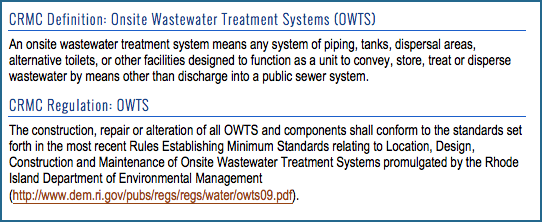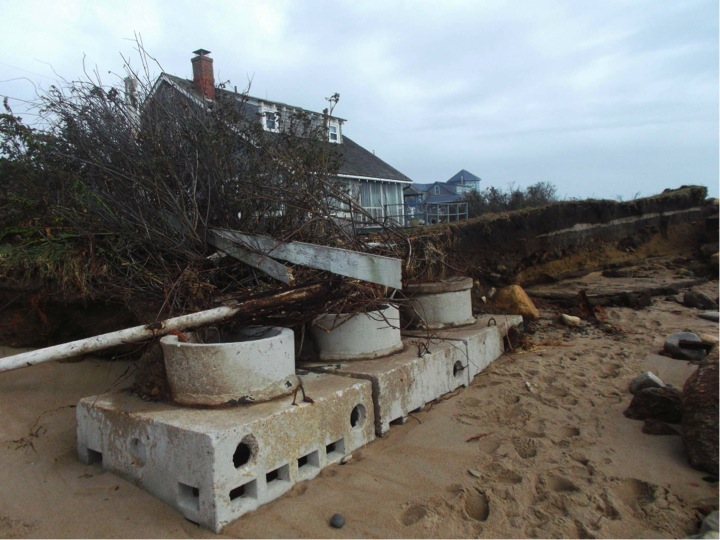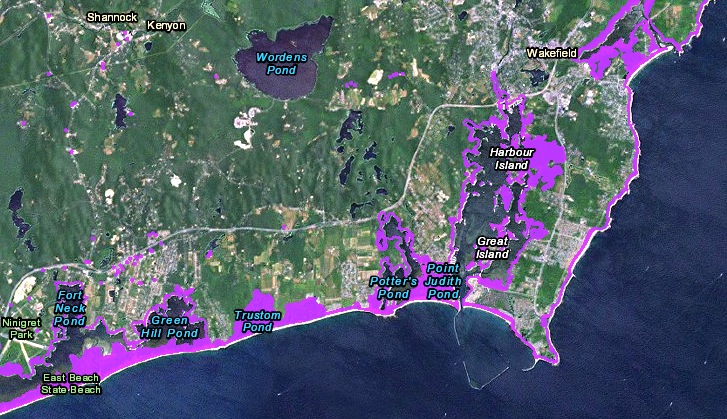Septic System Requirements
9. What kinds of septic systems are permitted in the coastal zone? Can I repair or replace a damaged septic system?
In addition to assessing buildings on the property for potential vulnerabilities to coastal hazards, it’s important to be aware of the property’s septic system status. If the property is not connected to the municipality’s sewer system and has an onsite wastewater treatment system, the system may be susceptible to damage from storms, flooding, or erosion. In some instances, the system may need to be repaired, replaced, or upgraded in order to meet CRMC standards.


Exposed septic system: Erosion can uncover and damage septic systems during severe coastal storms.
Why it matters: Within the coastal zone, the CRMC requires that any septic system within fifty feet of the shoreline be a zero-discharge system. Additionally, if the property has a cesspool within 200 feet of the shoreline, it must be replaced with a new septic system or the property must be connected to the municipal sewer lines in accordance with the DEM cesspool phase-out. A cesspool is any buried chamber that receives sewage from a building for disposal into the ground. For more information, please visit the DEM page on cesspool phase-out.
Below, purple shading indicates where the DEM’s cesspool phase-out program is in effect. See the DEM’s Environmental Resource Map to see other municipalities.

In the event that a septic system in the coastal zone needs to be repaired or replaced following a storm, the homeowner must first obtain a permit from DEM and then submit that permit and relevant plans to the CRMC for approval (for repairs in erosion areas, please see OWTS Guidance for Repairs in Critical Erosion Areas).
Find out more: For more information about septic system management in the coastal zone, please see Section 300.6 of the CRMC regulations, CRMC’s OWTS page, and the DEM’s Rules Establishing Minimum Standards relating to Location, Design, Construction and Maintenance of Onsite Wastewater Treatment Systems.
NEXT: Resilience – Retrofitting & New Construction >>
This website has been prepared by the University of Rhode Island’s Coastal Resources Center and Rhode Island Sea Grant for the R.I. Coastal Resources Management Council as a guidance resource. It is not intended nor should be used to give any legal advice nor to supersede any state or federal statutory or regulatory language or interpretation of such language. This website refers the reader to various regulations and policies adopted by federal and state regulatory agencies; the reader is encouraged to review the specific regulation and policy.
Rhode Island Coastal Property Guide Credits & Acknowledgements
